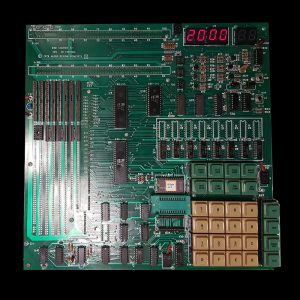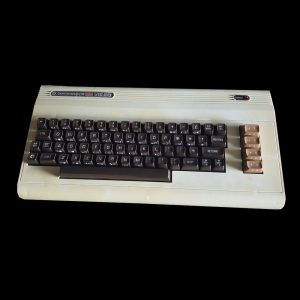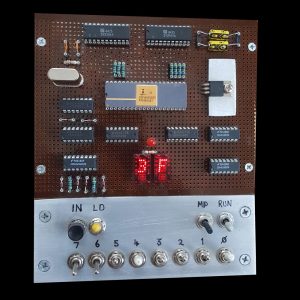
Welcome to Vintage Vibe
Here is my collection of vintage computers and electronics.
I'm a bit of a hobbyist and have done a variety of different projects and restorations.
I will be adding new posts from time to time as I complete each project. Here are some of my recent posts below ... enjoy.
About me..
S.D System Z80 Starter Kit
Posted by musovern on May 1st, 2018 in SD System, Single Board Computers | 0 comments
In 1979, S.D. Systems and Micro Design Concepts released the Z80 Starter Kit as an SBC – single board computer.
Able to run either 8080 or Z80 software, it was designed as the best value on the market for the hobbiest / experimenter / student who wants to learn about and work with microcomputers.
The built-in ZBUG Monitor program is a 2,048 byte program written for the Z80 which allows the user to enter and debug machine-level Z80 programs.
Input is accomplished via a hexadecimal keyboard plus 12 command keys.
Output is the 6-digit 7-segment LED display.
The expansion capabilities are vast, with on-board wire wrap area and two optional S-100 bus connectors, although only 45 out of 100 signals are present.
Read More...Commodore VIC 20
Posted by musovern on Apr 30th, 2018 in Commodore, Vintage Computers | 0 comments
The VIC-20 was intended to be more economical than the PET computer. It was equipped with 5 KB of static RAM and used the same MOS 6502 CPU as the PET. The VIC-20’s video chip, the MOS Technology VIC, was a general-purpose color video chip designed by Al Charpentier in 1977 and intended for use in inexpensive display terminals and game consoles, but Commodore could not find a market for the chip.
Read More...The Cosmac “Elf”
Posted by musovern on Apr 24th, 2018 in Cosmac-Elf, Single Board Computers | 0 comments
In August 1976 issue of Popular Electronics magazine, Joseph Weisbecker published a design for “Low-cost experimenter’s microcomputer” using RCA’s COSMAC CDP1802 microprocessor chip. It is a very simple computer having 256 bytes of memory, switches as input and LED as output. No ROM, every time you turn it on you have to enter program to RAM by toggling 8 switches, one for each bit. After the switches are set, pressing IN-button stores that byte to memory and increments address. Remember, that it only had 256 bytes of RAM, so it was not that big deal, but still takes some time. There is no way to step address backwards – if you made a mistake you have to start from beginning.
Read More...

